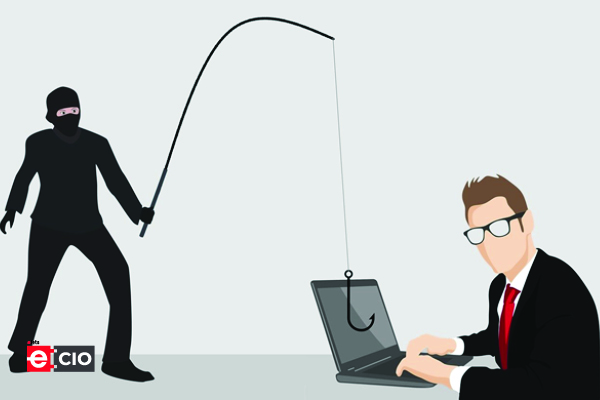
The increase in phishing assaults is a blatant sign that many businesses do not prioritise cybersecurity. You may still defend yourself from phishing attempts with basic security precautions, despite the fact that they are growing increasingly complex. You should think about establishing these five measures if your business doesn’t already have a cyberattack strategy established or if the company’s cybersecurity awareness campaign is ineffective:
Top 5 Steps Businesses Should Take To Prevent Phishing
● Recognize your primary line of protection
● Prioritize cybersecurity in the boardroom.
● Apply the fundamentals of cybersecurity culture
● Utilize a security awareness campaign to get ready for the upcoming attack.

1. Be Aware Of Your Primary Line Of Defence

You, the professional who answers telephone calls and emails from clients or business partners, are often the first line of protection against phishing scams. Ask an IT professional to assist you if you believe this is too much work for you to do so that you can concentrate on other subjects (like making sure all systems are running smoothly). They must be knowledgeable if they are to offer excellent customer service and contribute to the prevention of repeat breaches in the first place.

2. Give Cybersecurity Top Priority In The Boardroom
It’s critical that the board members of your business are conscious of their duties regarding cybersecurity as well as the dangers posed by phishing and other online threats. This can only be accomplished by teaching them on the best ways to safeguard the company’s information assets, and a seasoned business executive is the ideal person to do this. If your company hasn’t already begun, it’s time to do so right away!
Also Read | Six trends that will change the cybersecurity landscape in 2023
3. Introducing Cybersecurity Culture’s Fundamentals
Security behaviour is influenced by security culture, which is a set of common beliefs, presumptions, and values. It’s one of the most crucial elements of any cybersecurity plan since it may help you establish trust with your customers and staff by laying out for them what to do in the event of an attack or other unexpected data using wireless networks or devices.
Through training and education that inform employees of the appropriate behaviours when it involves safeguarding digital assets, security culture can be built over time (e.g., phishing attacks). The more people are aware of these crimes, the less likely it is that they will become victims again in the future.
4. Implement Security Awareness Programmes To Avoid Cyberattacks
A series of exercises known as a security awareness programme (antivirus, antimalware, VPNs) educate staff members about the dangers of phishing and other online threats. It may consist of:
Instruction on ransomware or how to minimize it and efforts to raise awareness among employees about the value of protecting personal information from these malwares and how to spot scams. And why to deal malwarebytes and ransomware a company needs a VPN app for Windows as it will restrict cyberattacks and make it inaccessible for Trojan horses to steal your credentials. Therefore, Companies should implement security softwares because they may utilise them to determine who is vulnerable to these scams and then take precautions to safeguard their business from those people or groups.
So, Implementing security softwares could help prevent further harm from happening within your company data to avoid future harm.
5. To Get Better Outcomes, Compare With Similar Organisations And Share (And Less Burden)
Also Read | Dell Technologies partners with Centre of Excellence for Cybersecurity (CySecK)
Information sharing is another method to increase security. By exchanging knowledge with other peers, you might benefit from their insights and steer clear of issues that you too could encounter in common.
Since all companies have access to all the information and may use it similarly as a result of sharing it, it is simpler for them to collaborate on initiatives. Additionally, even though everyone has availability to all of this interesting information, sharing it can conserve time and money by minimising lost time or efforts due to having to recreate the wheel repeatedly.
Conclusion
It’s crucial to keep in mind that these phishing protection steps are only the start of their protection journey. They will assist you in locating your organization’s most typical weaknesses so you can prevent them from turning into a significant issue for your company. But as we’ve seen, sometimes with all of this in place, some vulnerabilities still remain that cannot be fixed. This is why it’s best practice to test any new security programme or policy change in a limited setting first to ensure that everything runs well.
Be a part of Elets Collaborative Initiatives. Join Us for Upcoming Events and explore business opportunities. Like us on Facebook , connect with us on LinkedIn and follow us on Twitter.
"Exciting news! Elets technomedia is now on WhatsApp Channels Subscribe today by clicking the link and stay updated with the latest insights!" Click here!











